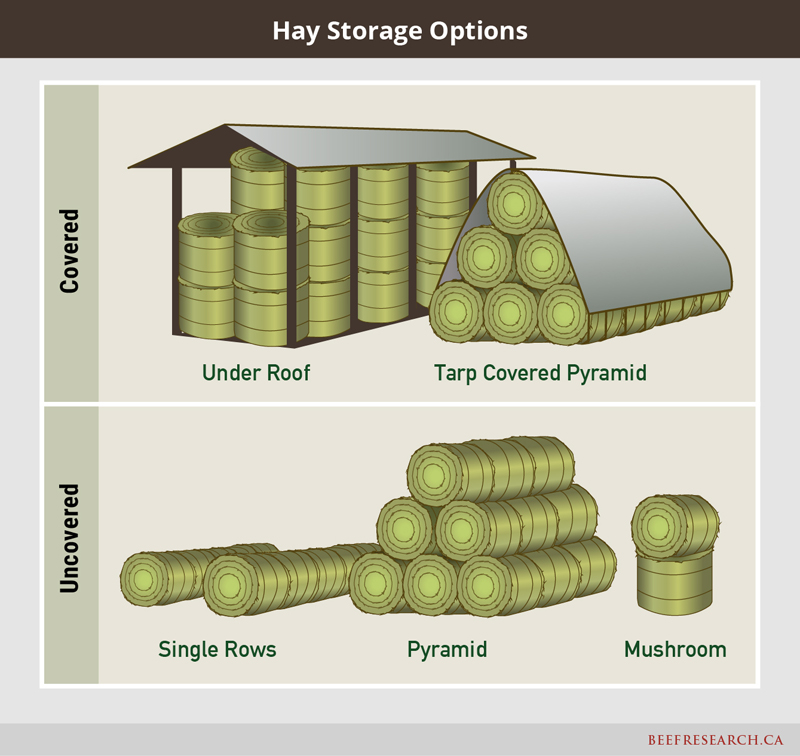From Field to Feed: Six Things to Think About When Storing Hay
As swathers, haybines and balers hit the fields, storing forages is on the minds of many beef cattle producers. Proper hay storage is essential to preserve these resources produced in the summer months and provide high-quality winter feed for livestock when grazing is not feasible or accessible.
Preparation done ahead of time can help to avoid quality and quantity loses when harvested forages are exposed to the weather. A six-foot diameter round bale stored uncovered can be expected to have spoilage in a four-inch layer around the outside of the bale, which represents 20% of the bale volume.
Given that feed is the major input cost in cattle production, producers must evaluate the cost of production for all stored hay systems to determine the one that best fits their operation and goals.
Six considerations to enhance stored hay quality:
1. Minimize storage losses due to heating and mould growth by baling at moisture levels between 15% and 18%.
2. Increased bale density enhances the ability of round bales to shed water. Even, uniform windrows make formation of consistently shaped and dense bales easier.
3. The external layer of a bale represents a substantial loss of yield and quality due to weathering. Bale size impacts the proportion of hay in the surface layer with larger bales having less percentage of their total feed exposed.
4. Choose well-drained storage sites: regardless of the method of storage, bales will pull moisture up from the ground through a “wicking” action. Therefore, choosing well-drained sites for storage locations can help prevent this.
5. Large round bales without cover should be stored end-to-end in single rows in a north-south orientation. Include space between the bales to facilitate good air circulation and drying.
6. Storage losses can be reduced by two-thirds with indoor storage and by one-half with good covering outside.
Hay storage is important to preserve forage quality and to provide cattle with the essential nutrients required to keep them healthy and the operation running smoothly. All farms are different, and no storage system is one size fits all, so find the option that works best with your farm.
For more information on hay quality and management, silage production, bale silage and greenfeed, visit the BCRC’s Stored Forages webpage.
LEARN MORE:
- Improving Forage Yields (BCRC topic page)
- Taking Some of The Guesswork Out of Winter Feed Challenges (BCRC post)
- Seven Tips for Grazing Corn (BCRC post)
- Silage: More than Just Filler (BCRC post)
Sharing or reprinting BCRC posts is welcome and encouraged. Please credit the Beef Cattle Research Council, provide the website address, www.BeefResearch.ca, and let us know you have chosen to share the article by emailing us at [email protected].
Your questions, comments and suggestions are welcome. Contact us directly or spark a public discussion by posting your thoughts below.

